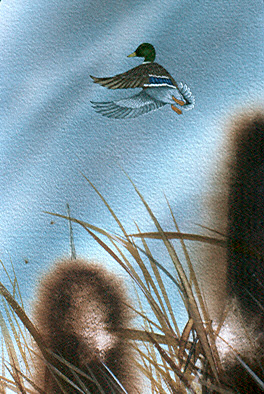At
one time I was a huge fan of science fiction. I belonged to a science fiction
book club and read just about everything that I could get my hands on. Science
fiction writers wrote about possibilities, how it was possible that there was
something out there, something that might save us from ourselves. Then, I came
to understand that despite what is written about space travel, and alien
societies, and our making contact, it ain’t going to happen. Unlike the dolphins
in Douglas Adams’ fourth book, So Long, and Thanks for All the Fish, of
the Hitchhiker's Guide to the Galaxy "series"
, we have no
choice, but to stay and solve our own problems. And so I’ve tried through my
art to impress upon those that I’ve met that what we have is quite awesome, a
miracle of sorts, and that we really must try, however we’re able, to preserve
and protect our natural heritage. As I understand it, once it’s gone, it’s gone
for all time.
 |
DAWN FLIGHT - CANADA GEESE Etching |
This morning a flock of Canada Geese flew over heading north. At last, a real sign that spring is just around the corner. It’s also a signal to me, myself, and I, that I should get out to the marsh and other wild places to observe and sketch and paint and enjoy our wild heritage.



.jpg)

.jpg)


+cropped.JPG)
+cropped.JPG)
.jpg)

+cropped.jpg)
+cropped.jpg)
.jpg)





















